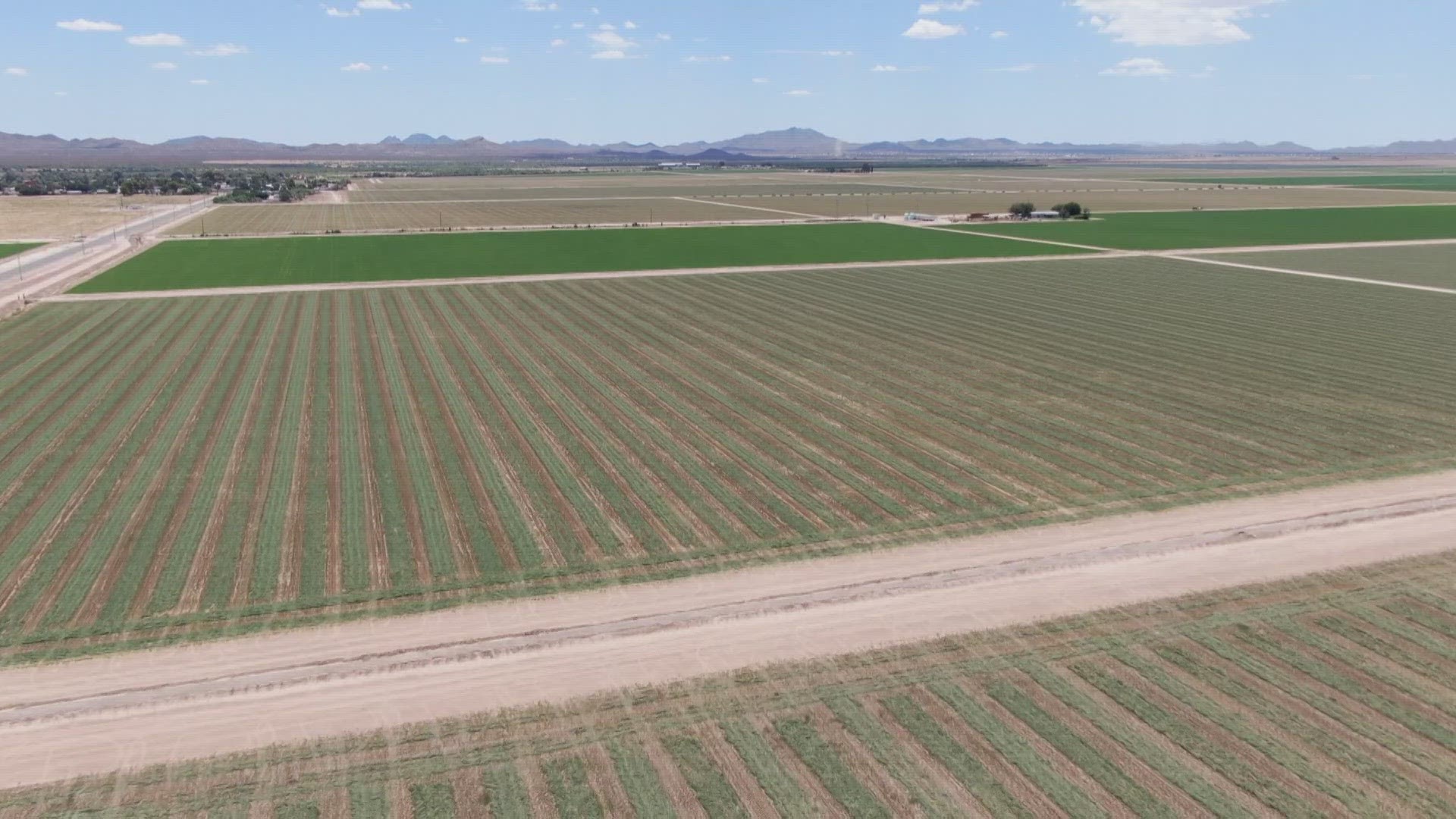LA PAZ COUNTY, Ariz. — There's water underneath La Paz County. Only problem: No one's really sure how much.
And even worse, no one's sure how quickly it's being pumped out either.
La Paz County, which starts about 90 minutes west of Phoenix, is mostly brown desert studded with green fields of crops. There's a canal or two running through the farms, but the water mostly comes from wells pumping it up from underground.
"If you don't know what's underneath the ground, how can you even determine how much your supply and demand is going to be?" La Paz County Supervisor Holly Irwin said.
Water is everything in La Paz County. It's the center of the controversy over a Saudi Arabian alfalfa grower -- Fondomonte -- that's bought up thousands of acres. Alfalfa is one of the most water-intensive crops to grow, and Fondomonte ships it back to Saudi Arabia to feed dairy cows.
Local politicians have taken aim at taxing Fondomonte and other foreign companies, but it's not just foreign-owned farms sucking La Paz County dry.
Arizona has something called Active Management Areas. These are areas with a heavy reliance on subterranean groundwater where its use is tracked closely. La Paz County isn't in one of these zones.
La Paz is unrestricted, which means anyone with a well can pump any amount of water they want, and no one tracks it. Irwin wants a hydrologic survey to find out how much water the county has left.
"I know that funding is a is a major part of it," Irwin said. "The county doesn't have the funds in order to conduct these hydrology studies"
But it's not just the funding that's an issue. Experts say measuring the amount of groundwater in a place is incredibly difficult. After all, it's not like this is some underground lake to tap into.
“It’s not as if there are just these layers, these pockets of water," Sarah porter with Arizona State University's Kyl Center for Water Policy explained. "We're talking about water that's held in the tiny spaces between the material that are the layers of the earth."
In other words, groundwater is basically mud and sand mixed with water. Measuring the water content of soil and rock that you can't see is almost impossible... But not quite.
“It's very hard," Porter said. "Hydrologists have to figure out basically the shape of the aquifer. And then they can estimate down to a certain depth.”
Those estimations are slow going in La Paz County, so experts are in the dark. Since wells in the county's rural areas aren't required to be metered, we don't even know how much groundwater is being siphoned every day.
"You need to know not only how much water is there, but you also really, really need to know how much demand is there," Porter said.
Fondomonte, for example, got state approval to build a new well that could pump 3,000 gallons a minute. That equals more than one and a half trillion gallons a year. but no one knows how much it pumps, or even when.
To put those numbers into context, the standard bathtub only holds around 80 gallons of water. That's a lot of bathtubs, and Irwin is worried that homeowners are going to feel the ramifications very soon.
“You're going to have people that are just going to come here to market that water and make millions and millions of dollars," Irwin said.
The county is still fighting a lawsuit with a water investor who bought land in La Paz County and wanted to transfer the water to the town of Queen Creek.
Porter said there are a lot of hoops that any potential water investors would have to jump through to do the same thing in the future. But the fact that it's happened even once is enough to worry Irwin.
As the wells in La Paz County continue to run, no one is watching.
Water Wars
Water levels are dwindling across the Southwest as the megadrought continues. Here's how Arizona and local communities are being affected.

